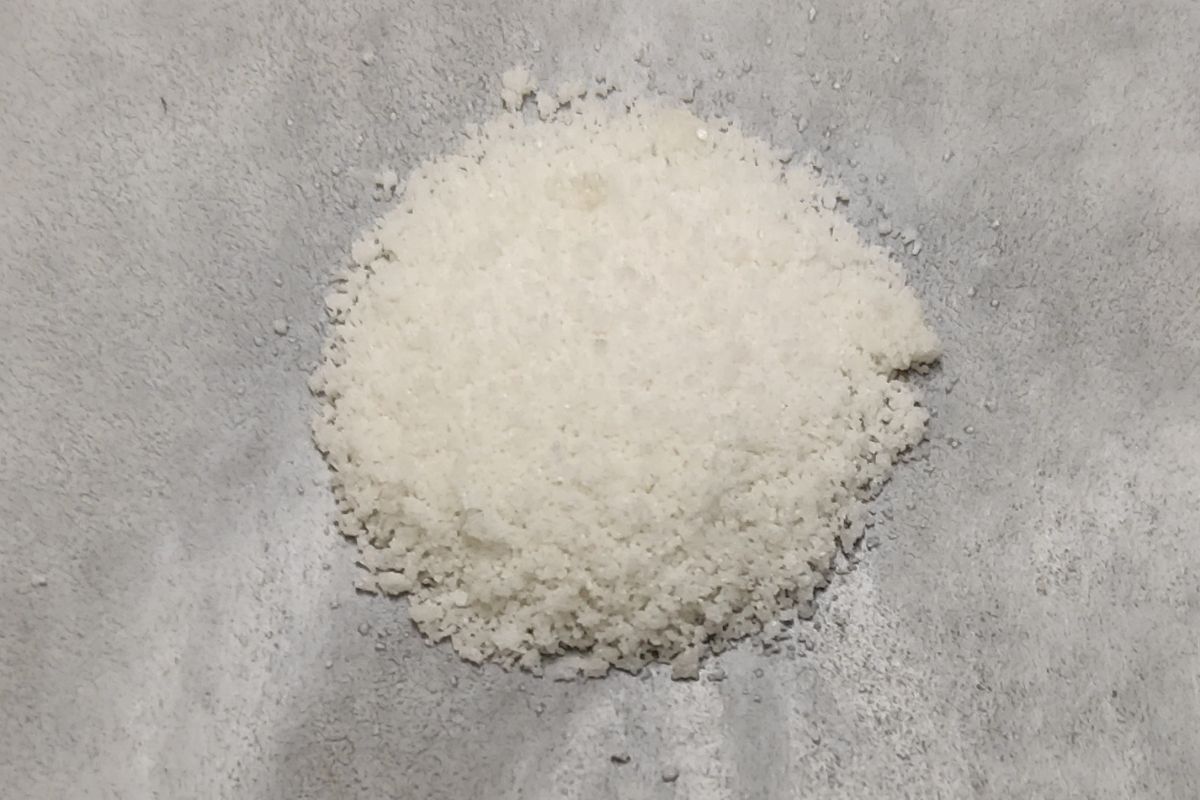
Bismuth(III) chloride might sound like a mouthful, but this compound holds some pretty cool secrets. Ever wondered what makes it special? Bismuth(III) chloride is a chemical compound with the formula BiCl₃. It's known for its unique properties and uses in various fields, from medicine to electronics. This compound appears as a white or yellowish crystalline solid and is highly soluble in water. One of its standout features is its ability to form complex structures with other molecules, making it a valuable player in chemical reactions. Ready to dive into the world of Bismuth(III) chloride? Let's uncover 30 fascinating facts about this intriguing compound!
Key Takeaways:
- Bismuth(III) Chloride: A Unique Compound Bismuth(III) chloride, with its white crystalline appearance, has diverse uses in catalysts, pharmaceuticals, and pigments. It's relatively non-toxic and environmentally friendly, making it an intriguing compound for various applications.
- Safety First with Bismuth(III) Chloride When handling bismuth(III) chloride, remember to use protective equipment, store it properly, and avoid inhaling its dust or fumes. Despite its low toxicity, caution is still necessary for safe handling.
What is Bismuth(III) Chloride?
Bismuth(III) chloride, also known as bismuth trichloride, is a chemical compound with the formula BiCl3. It is a white or slightly yellow crystalline solid that is often used in various chemical reactions and applications. Here are some fascinating facts about this compound.
-
Chemical Formula: The chemical formula for bismuth(III) chloride is BiCl3.
-
Appearance: It appears as a white or slightly yellow crystalline solid.
-
Molecular Weight: The molecular weight of BiCl3 is approximately 315.34 g/mol.
-
Melting Point: Bismuth(III) chloride has a melting point of about 227°C (441°F).
-
Boiling Point: Its boiling point is around 447°C (837°F).
Physical Properties of Bismuth(III) Chloride
Understanding the physical properties of bismuth(III) chloride can help in its practical applications. Here are some key physical properties.
-
Density: The density of BiCl3 is approximately 4.75 g/cm³.
-
Solubility in Water: It is moderately soluble in water, forming a milky solution.
-
Color: The compound is typically white or slightly yellow in color.
-
Odor: Bismuth(III) chloride is odorless.
-
Crystal Structure: It crystallizes in a monoclinic structure.
Chemical Properties of Bismuth(III) Chloride
The chemical properties of bismuth(III) chloride make it useful in various reactions. Here are some notable chemical properties.
-
Hydrolysis: BiCl3 hydrolyzes in water to form bismuth oxychloride (BiOCl) and hydrochloric acid (HCl).
-
Reactivity with Bases: It reacts with bases to form bismuth hydroxide.
-
Oxidation State: Bismuth in BiCl3 is in the +3 oxidation state.
-
Lewis Acid: BiCl3 acts as a Lewis acid, accepting electron pairs.
-
Complex Formation: It can form complexes with ligands such as chloride ions.
Uses of Bismuth(III) Chloride
Bismuth(III) chloride has several applications in different fields. Here are some of its uses.
-
Catalyst: It is used as a catalyst in organic synthesis.
-
Pharmaceuticals: BiCl3 is used in the preparation of some pharmaceutical compounds.
-
Pigments: It is used in the production of pigments for cosmetics.
-
Chemical Reagent: BiCl3 serves as a reagent in various chemical reactions.
-
Nanotechnology: It is used in the synthesis of bismuth-containing nanoparticles.
Safety and Handling of Bismuth(III) Chloride
Handling bismuth(III) chloride requires caution due to its chemical properties. Here are some safety considerations.
-
Toxicity: BiCl3 is considered to be of low toxicity but should still be handled with care.
-
Protective Equipment: Use gloves and eye protection when handling the compound.
-
Storage: Store in a cool, dry place away from moisture.
-
Inhalation: Avoid inhaling dust or fumes from BiCl3.
-
Skin Contact: Wash thoroughly with soap and water if it comes into contact with skin.
Interesting Facts about Bismuth(III) Chloride
Here are some intriguing facts that highlight the unique aspects of bismuth(III) chloride.
-
Historical Use: Bismuth compounds have been used since ancient times for medicinal purposes.
-
Non-Toxicity: Unlike many heavy metals, bismuth and its compounds are relatively non-toxic.
-
Environmental Impact: Bismuth(III) chloride is considered environmentally friendly compared to other heavy metal chlorides.
-
Research: Ongoing research explores its potential in various advanced materials and technologies.
-
Biocompatibility: Due to its low toxicity, BiCl3 is being studied for use in biomedical applications.
Bismuth(III) Chloride: A Fascinating Compound
Bismuth(III) Chloride, with its unique properties and applications, stands out in the world of chemistry. This compound, known for its low toxicity compared to other heavy metals, finds use in cosmetics, pharmaceuticals, and industrial processes. Its crystalline structure and colorful appearance make it a subject of interest for both scientists and hobbyists.
Understanding Bismuth(III) Chloride's role in catalysis and material science highlights its importance in modern technology. From synthesis of organic compounds to nanotechnology, this compound proves versatile.
Learning about Bismuth(III) Chloride not only enriches your knowledge of chemistry but also opens doors to appreciating the intricate details of the elements around us. Keep exploring, stay curious, and who knows what other fascinating facts you might uncover next!
Frequently Asked Questions
Was this page helpful?
Our commitment to delivering trustworthy and engaging content is at the heart of what we do. Each fact on our site is contributed by real users like you, bringing a wealth of diverse insights and information. To ensure the highest standards of accuracy and reliability, our dedicated editors meticulously review each submission. This process guarantees that the facts we share are not only fascinating but also credible. Trust in our commitment to quality and authenticity as you explore and learn with us.
